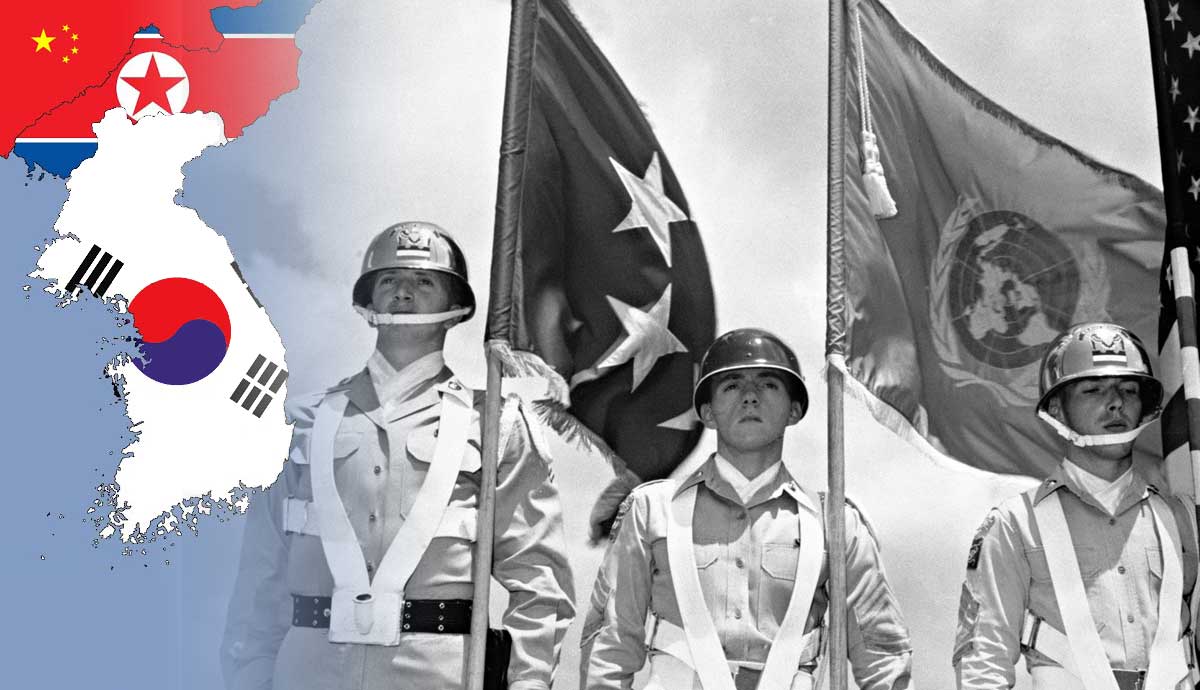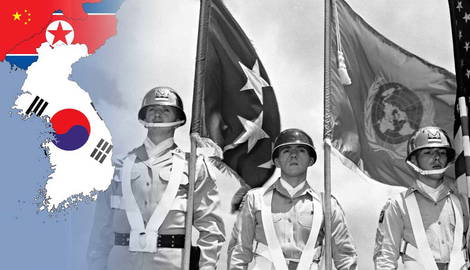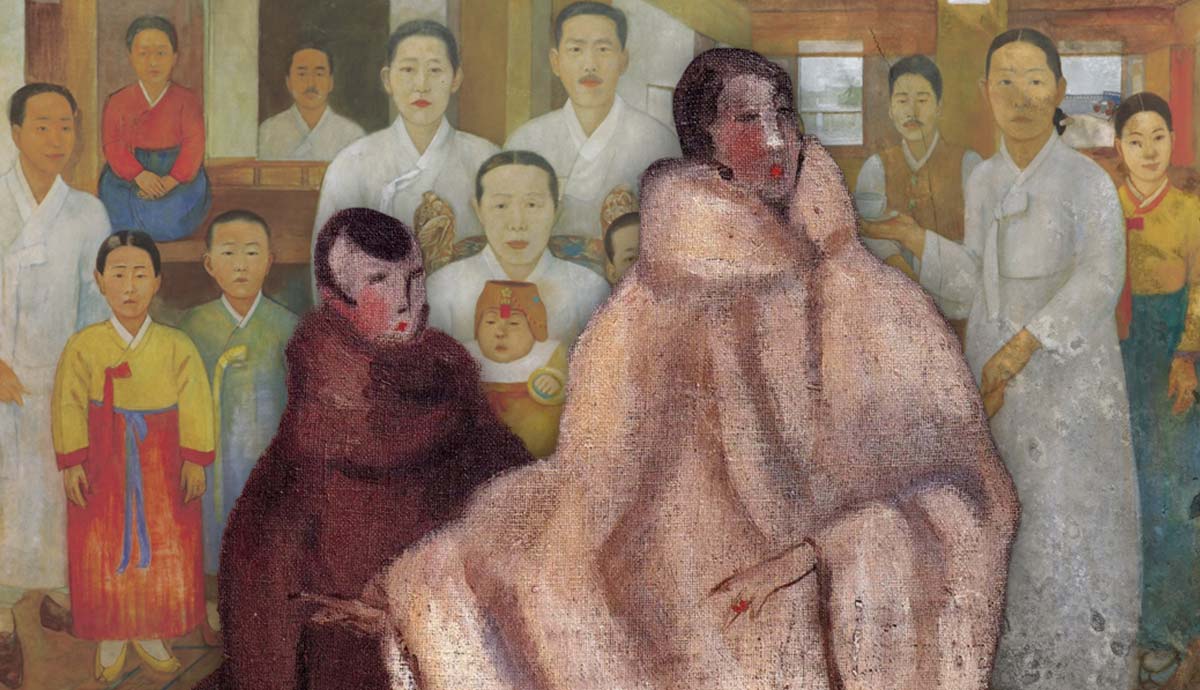
Unfortunately, the end of World War II did not bring about lasting peace. In many territories formerly controlled by Japan, liberating forces under the United States and the Soviet Union supported opposing political groups. The Soviets supported communist revolutionaries who wanted to rebuild their respective nations under socialist principles. At the same time, the Americans supported pro-Western capitalists who wanted to rebuild their respective nations with free-market reforms. Tensions quickly rose as each group wanted to reunite nations under one system or the other. In 1950, shortly after the communists won the Chinese Civil War, communist North Korea suddenly invaded South Korea in an attempt to reunify the Korean Peninsula under communist rule.
Setting the Stage: Japanese Korea (1910-1945)

Like European powers, Japan sought colonization for the purpose of both accessing natural resources and having captive markets to which domestic goods could be sold. As population growth and the increase in large landholders made overcrowding, especially of the poor, common in Japan, colonies provided a location to send disaffected young men who might cause trouble. For the first decade of colonization (1910-20), the Japanese military directly governed Korea, resulting in harsh treatment of Koreans who expressed any dislike of colonial rule.
Japanese treatment of Korea is often described as mixed, with harsh treatment of dissent contrasting with reforms and industrialization that rapidly modernized the colony’s economy. After widespread demonstrations against Japanese rule erupted in 1919, some self-government was enjoyed temporarily. In the early 1930s, however, Japan cracked down again and sought to erase a separate Korean identity by forcing Koreans to adopt Japanese surnames and follow Japanese religious practices. Most Koreans complied, avoiding bloodshed.
Japanese Korea During World War II

World War II in Asia began in 1937 with the Second Sino-Japanese War. At this point, thousands of Korean men were drafted into the Japanese military and pressed into wartime service. The war also allowed Japan to force thousands more Koreans into unpaid wartime labor. Many women, 80 percent of whom were from Korea, were forced to become comfort women who were sexually abused by Japanese troops, in a system that actually began as early as 1932 in Japanese-controlled northern China. As the war spread rapidly in 1941 and 1942 to the Pacific islands and Southeast Asia, the comfort women program was expanded to all areas of Japanese control.
Over 100,000 Korean men were drafted to serve in the Japanese army by 1945, and up to 1.2 million Koreans were forced into some manner of wartime labor. Thousands died in industrial accidents, often worsened by negligent and harsh treatment by the Japanese. Korea’s use as a labor pool for Japan ended up with some Koreans fighting on both the Axis and Allied sides of World War II, with Koreans drafted into the Japanese military being captured by the Soviet Union and later drafted into the Red Army, likely in both militaries as supply and logistical support.
End of World War II in Korea

Throughout World War II, Japan controlled the entirety of the Korean Peninsula. However, in early August 1945, the Soviet Union fulfilled its obligation under the Tehran Conference and declared war on Japan within three months of Germany’s surrender. A massive surprise attack began on August 8, sending some 1.6 million Red Army troops into Japanese-occupied northern China. In concert with the two atomic bombs dropped by the United States, the Soviet declaration of war on Japan quickly convinced the emperor to surrender. On August 15, Japan announced its surrender, which was formalized on September 2.
Soviet troops entered Korea from the north on August 9 while hostilities were still occurring. After the formal surrender, American troops sailed into Korea from the south on September 8. Supporters of each governmental system largely migrated toward them: pro-communist Koreans supported the Soviet plans for reunification, while nationalist Koreans supported the American plans. Both the Soviet Union and the United States set up competing governments. With no deal on reunification forthcoming, the peninsula was divided at the 38th parallel, creating North Korea and South Korea.
1945-1949: Cold War Tensions Surge

After the end of World War II, tensions quickly surged between the United States and the Soviet Union. The USSR reneged on its wartime agreement to remove its troops from eastern Europe and promptly set up communist satellite states between East Germany (Germany being divided among the victorious Allies). At the same time, the US and Canada discovered Soviet spy rings, including the theft of atomic bomb secrets from the Manhattan Project. In 1949, the Soviets detonated their first atomic bomb, removing the United States military trump card.
In Asia, the Cold War erupted with the resurgence of the Chinese Civil War. Prior to the Second Sino-Japanese War, armed tensions had already begun between communists and pro-capitalist nationalists. After the Japanese were expelled, both sides abandoned their temporary alliance to continue fighting for control of China. On October 1, 1949, only weeks after the first Soviet nuclear explosion, the Chinese communists, led by Mao Zedong, declared victory and control of the country. The defeated Nationalists, led by generalissimo Chiang Kai-shek, fled to the offshore island of Formosa and created the new nation of Taiwan.
Summer 1950: Beginning of the Korean War

On June 25, 1950, the North Korean People’s Army stormed across the 38th parallel and into South Korea in a planned invasion. Two days later, the United States declared its intention to defend South Korea, with US president Harry S. Truman taking a firm stand against the spread of communism. However, aided by both the Soviet Union and Communist China, North Korea was far more militarily developed than the South and quickly seized lots of territory. Within months, North Korea had taken Seoul, the capital city of South Korea.
The United Nations quickly formed a multinational force to defend South Korea and oppose the hostile invasion, with sixteen members committing troops. The United States led the coalition and committed the vast majority of UN soldiers, though Britain also sent a sizable contingent, along with Canada and Turkey. In the early months of the war, the South Korean and UN forces struggled to develop positive momentum. By the end of the summer, the South Korean and UN forces had been pushed to the southeastern port city of Pusan. Communist successes in the war furthered the ongoing Second Red Scare in the United States, with many Americans fearing that communist expansion was virtually unstoppable.
September 1950: US Turns the Tide at Inchon

Although North Korea had almost pushed South Korean and UN forces into the sea at Pusan, the US put its World War II amphibious invasion experience to good use with the surprise Inchon invasion on September 13, 1950. After two days of naval and aerial bombardment of the port city of Inchon, US Marines landed ashore. The invasion was a tremendous success, furthering the heroic image of General Douglas MacArthur, who had led the US Pacific Theater operations during World War II. The US and its UN allies swiftly pushed the North Koreans back across the 38th parallel.
However, pushing North Korean forces back across the pre-war border prompted controversy. How far would the US push its opponent? Allied with China, North Korea could withdraw its forces into China for rest and resupply, making it difficult for the US to secure a decisive victory. MacArthur continued to push North Korean forces closer to the Yalu River, which formed the border between North Korea and China. Pyongyang, North Korea’s capital, had fallen on October 19. Warnings began to flow from Washington, urging MacArthur to stop his northward drive so as not to provoke China to attack.
Winter 1950: China Strikes Back

On October 25, 1950, the Chinese attacked US forces near the Yalu River for the first time. Days later, the Chinese began pushing further in the Battle of Unsan. In late November, following another US offensive, China sent almost a million soldiers across the Yalu River, entering the war en masse. This drastically changed the nature of the war, with the US military now facing a much larger opponent. There were also fears that the Soviet Union would also intervene on the side of North Korea, as the USSR was allied with both North Korea and China.
The massive Chinese army pushed the US forces south. In response, General MacArthur advocated for a more aggressive military response, including the use of nuclear weapons. This contrasted with the goal of many in Washington, including President Truman, who wanted to end the war with minimal bloodshed. Some wanted a simple return to the pre-war border of the 38th parallel. In April 1951, after MacArthur continued to push the use of nuclear weapons, he was relieved of his command by President Truman. This move was highly controversial since many Americans viewed MacArthur as a war hero.
Soviet Air War Leads to First Fighter Jet Dogfights

Similar to World War II before it, the Korean War was a conventional war that saw both sides use large formations of infantry, armor, and air power. One new innovation that was used by both sides for the first time was the jet fighter. Although the jet fighter had been introduced during World War II, the Korean War was the first conflict where both sides used such planes against each other at the same time. On November 8, 1950, the world saw the first fighter jet dogfight, with a US Air Force F-80C “Shooting Star” downing a Soviet-made MiG-15. Although the Soviet Union often tried to hide its direct involvement, it quickly became clear that Soviet pilots were flying many of the MiGs that swept south through “MiG Alley” from China.
As a result of the Korean War coming so quickly after World War II, both the US and the Soviet Union had a large supply of experienced fighter pilots. Many World War II aces (pilots with five or more confirmed kills) also flew during the Korean War. Seven American aces from World War II also achieved such a status during the Korean War. The first jet ace – five kills achieved in a jet fighter – of the war was crowned on May 20, 1951. Unfortunately, the Soviets had plenty of their own jet aces, with the Soviets allegedly flying a full three-quarters of air missions undertaken by North Korean forces.
1953: Stalemate Leads to Demilitarized Zone

After the Chinese pushed the US forces back to around the 38th parallel in 1951, the two sides seesawed back and forth for a little while before settling into a heavily-armed stalemate by December 1952. Both sides “dug in” and created armored and reinforced positions, similar to trench warfare on the Western Front during World War I. By this point, the war had become very costly in terms of manpower, especially since fixed positions meant the expectation that fresh troops would be rotated in on a regular basis. There was also a decline in World War II veterans on the front lines, with their replacements being less experienced in combat. By early 1953, many Americans wanted an end to the war.
New US president Dwight D. Eisenhower, who had been the Allied commander in Europe during World War II, had the political capital and public trust to end the Korean War with honor. On July 27, 1953, an armistice was signed, ending fighting between the UN and South Korean forces and North Korean forces. A heavily armed demilitarized zone (DMZ) was built between North and South Korea, which remains the national border today. Technically, the two Koreas are still at war, with no official peace treaty being signed.
Effects of the Korean War: Continued Tensions

The stalemate at the end of the Korean War resulted in continued tensions. During the Cold War, North Korea was heavily supported by the Soviet Union, as well as China. South Korea was supported by the United States, including an active military presence of thousands of US troops. Periodically, North Korea would engage in Cold War provocations, such as the seizure of the USS Pueblo in 1968. Along with the Soviet Union, North Korea supported North Vietnam during the US involvement in the Vietnam War (1964-73).
North Korea’s continued provocations since 1953 have forced high US military spending in the region to help ensure the safety of both South Korea and Japan. After the end of the Cold War in 1991 with the collapse of the Soviet Union, North Korea remains the last true centrally-planned command economy in the world. The lack of Soviet economic aid has made North Korea’s behavior less predictable, with some concerned that impending economic collapse of North Korea itself may provoke dictator Kim Jong-Un to launch a horrific invasion of South Korea in a risky attempt to solve the crisis in a “blaze of glory.”










